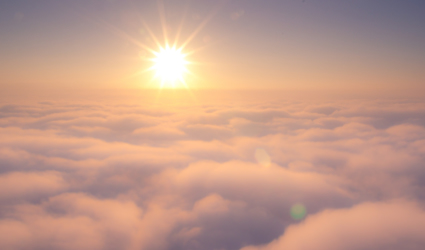Thursday October 27, 2016
Jingdezhen, Hangzhou, 27.10.2016
At breakfast all the women in our group are together; we discuss the great happenings of the day before; we are feeling happy and sad at the same time though as it is also true that Sam and Marion are leaving us this morning to go to Beijing. At the reception desk we hear a clutter of voices: we run through the reception hall towards Sam and Marion just before they get into the cab. We hug and thank them for all the inspiration, for the great night in the village of Jinkeng, when Sam did the lecture with Marion. Before we know it the cab is out of sight and yes! that hurts.
Today we have a free program; I will go back to the museum. But first I need to pick up my stuff from my room and tidy it a bit so the room will be easy to clean for the hotel service. I peer outside through the window in the hotel room: close by a very tall chimney pipe of a kiln is visible. That is why this Jingdezhen hotel is so lovely: placed between a kiln’s chimney and a porcelain market!
While dropping off my bags at the reception I run into Truke.
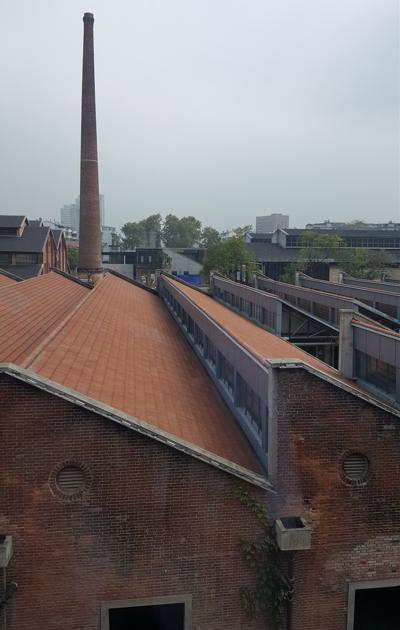
The taxi picks us up from the hotel to get us to the Jingdezhen Museum at the other side of the river. Truke sits in front of the taxi; from the back seat I observe the high rise buildings passing by.
We cross the bridge over the river. In front of the museum we note a gentleman sitting on a stone, it is Carl! So much for the “mattina grassa” he mentioned yesterday evening - he has already visited the museum this morning, before we ate our dumplings at the hotel. Happily he takes over the taxi from us heading downtown. Truke and I hurry to the entrance hall of the great museum – time we want and need to admire all the beautiful objects here. Truke goes to admire the Qing collection; I go for a visit of the department with the Song and Yuan collection.
Porcelain stone, kaolin, glaze ash are shown. I take pictures of kiln furniture, molds, stones, upward burning saggar types, pigments. Some explanations are written in English in the museum. The Jingdezhen porcelain standard is described as follows:
1. Raw materials for petunse (lump): kaolin and porcelain stones
2. Raw materials for glazes: glaze stones and glaze ash
3. Raw materials for kiln furniture: natural material and synthetic

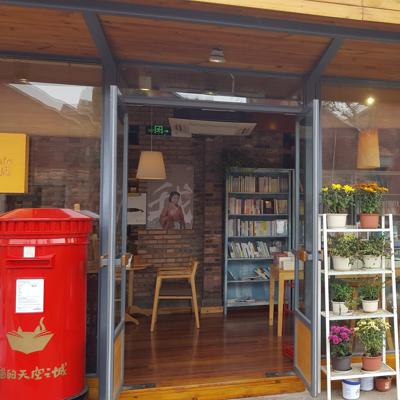
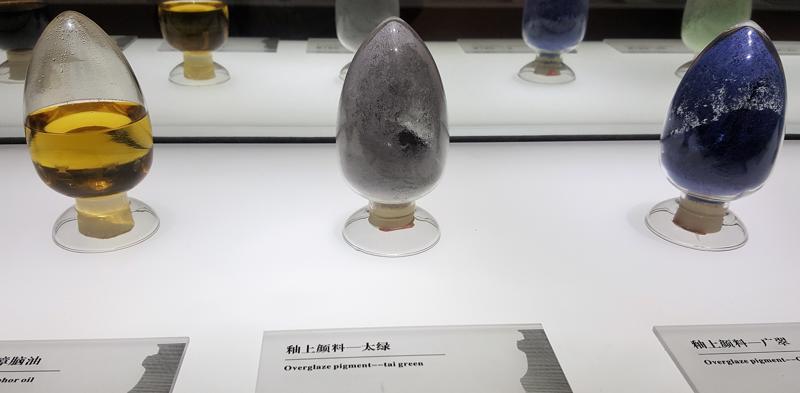
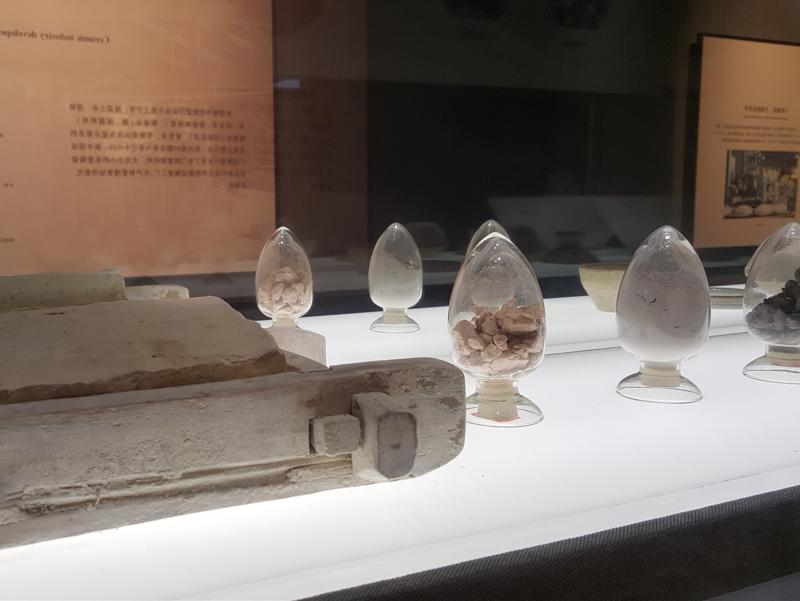
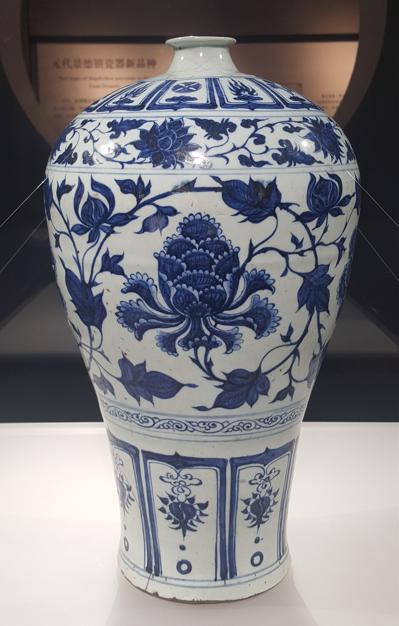

material.
I continue through the huge halls and corridors and up and down the stairs, to the Yuan and Song dynasty departments. The exhibition spaces are impressive. The porcelain exhibited is just marvelous. I learn from the description boards on the walls of all the exposition rooms. It is unfortunate that the QR codes with information do not work for foreign phones.
I use my time well; I take many pictures; enjoy all the beautiful objects around me. The Republic of China porcelain I get to admire by surprise: it is exhibited in a huge department on the highest floor of the museum. The book of Stacey Pierson ”Chinese Ceramics” shows, in the last chapter, the eccentric and sometimes bourgeois beauty of last century wares. See her book: https://www.amazon.co.uk/Chinese-Ceramics-Stacey-Pierson/dp/1851775765 .She writes on page 130: “Traditional porcelains in the 1980’s with a slightly more contemporary style were manufactured”. She also comments on the names of the potter’s families’ descendants on the porcelains of that time. In this major museum I realize there is a broad range of porcelain artefacts made in the 20th and 21st centuries till today; these are valuable additions to the old collections.
After all the great Song, Yuan and Qing wares, celadon wares, bluish-white glazes, Yuan underglaze blue flowers, the Yongzheng poetical designs I find myself in the bookstore on the upper floor. My urge to read characters is feverish: so many great books here, but no way to understand the texts.
Truke and I meet in the entrance hall at 15:00. Truke is equally impressed with this Jingdezhen China Ceramics museum. The museum curators teach us via their choice of materials and objects about ceramic history. All types of old and newly produced porcelains are collected here to tell us that story. I shoot a picture of Truke







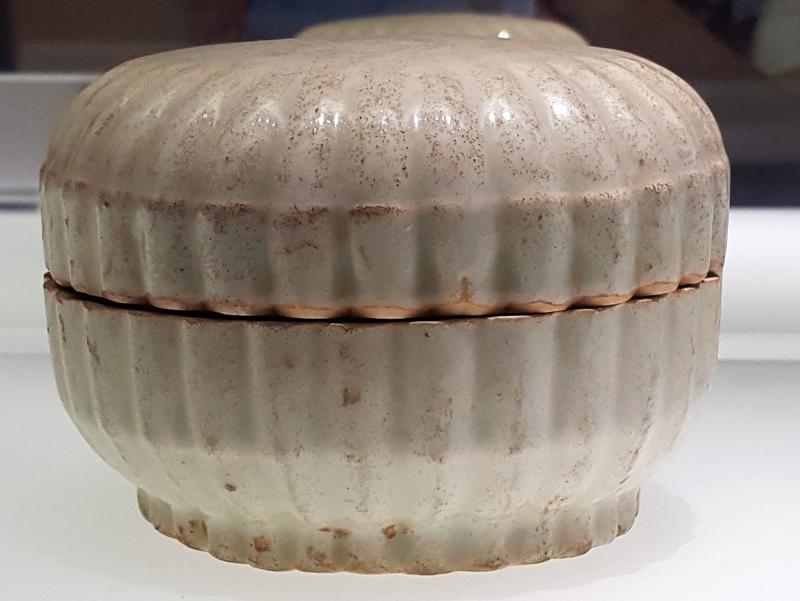

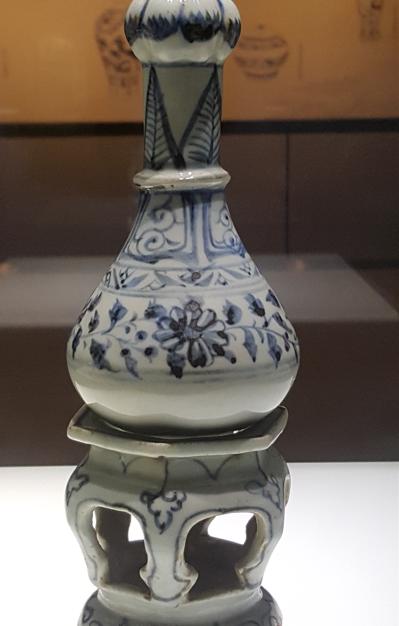

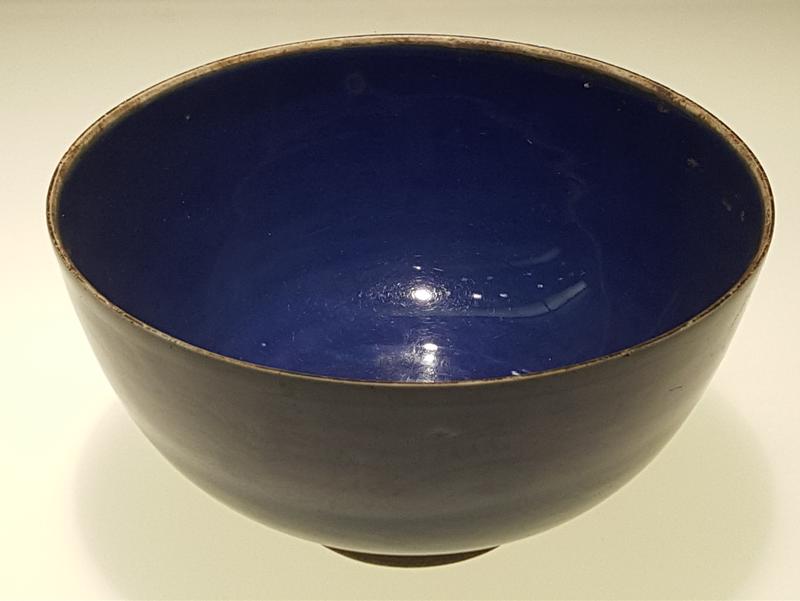
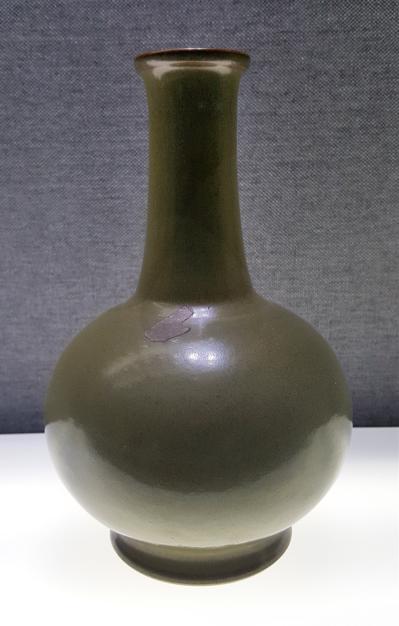
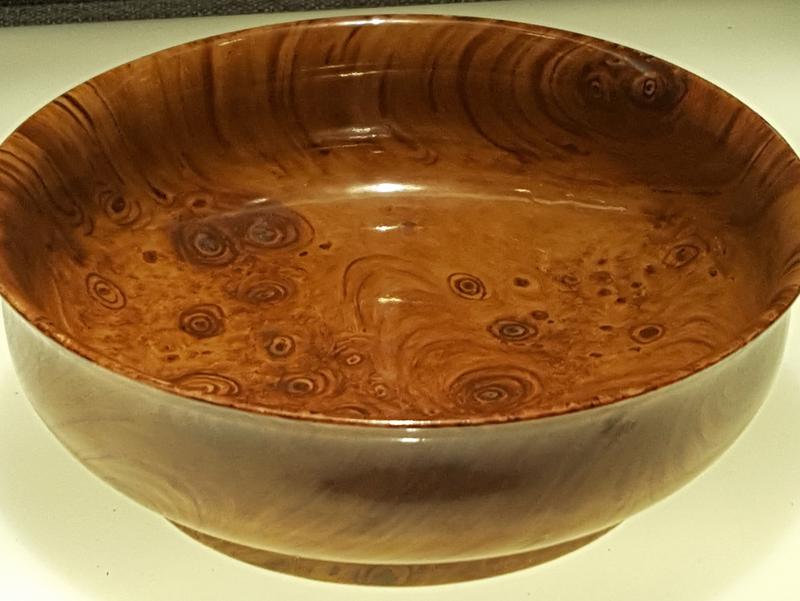
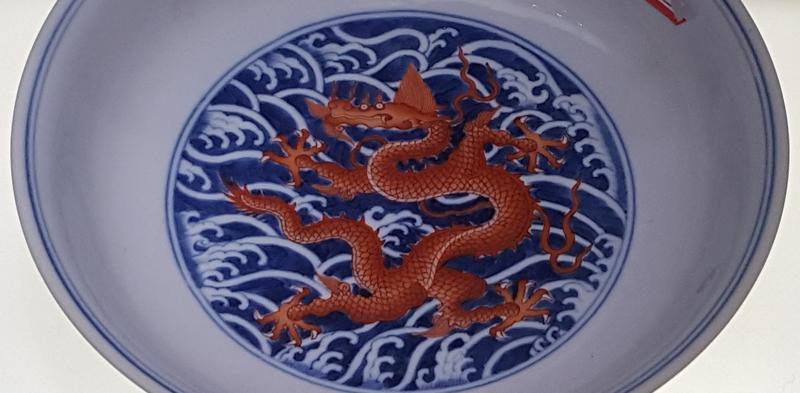
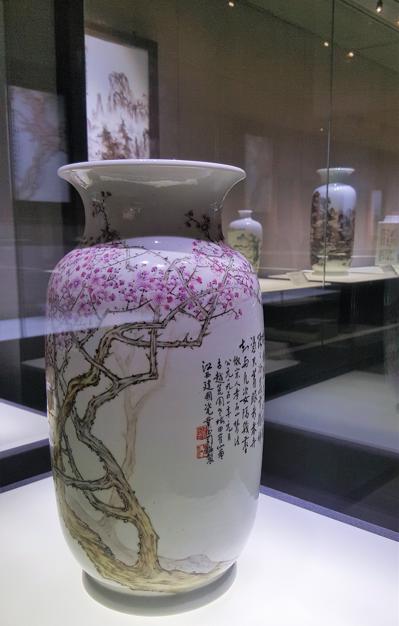
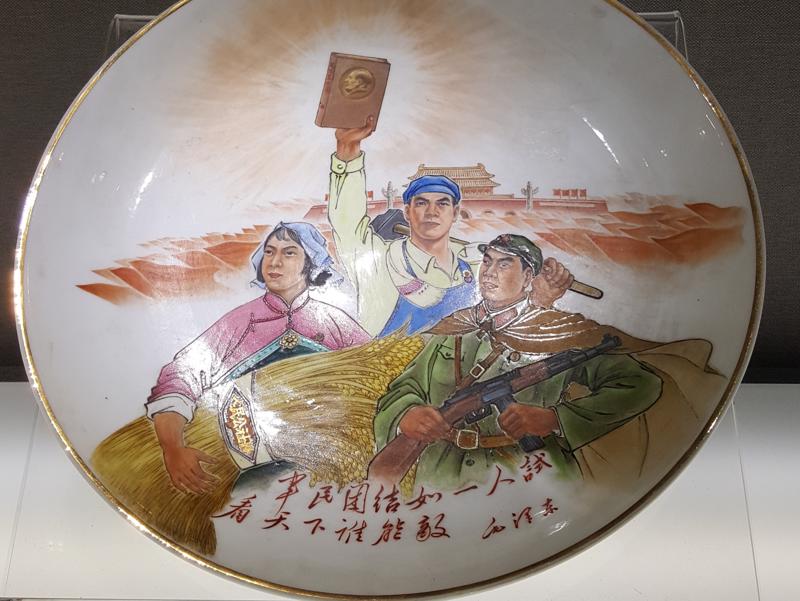

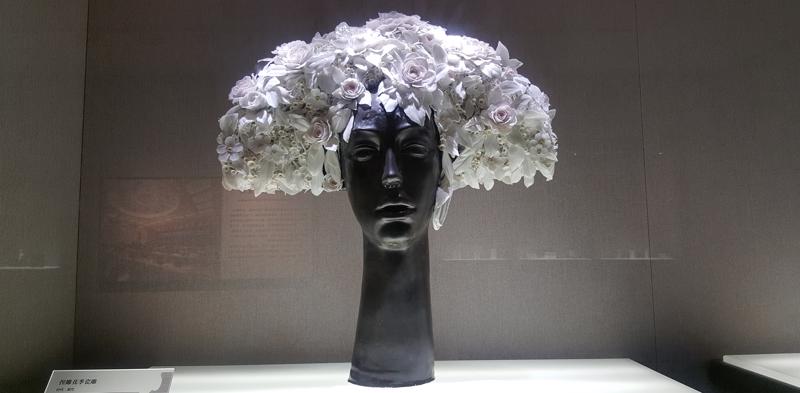
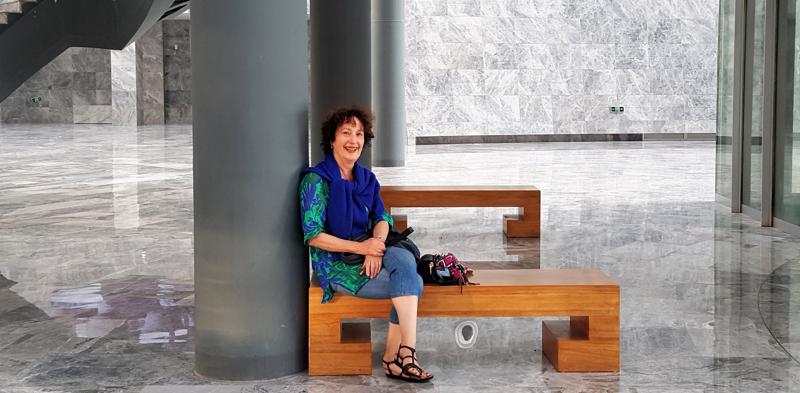
sitting relaxed on a bench in the hall.
We leave the museum via the shops, where lots of new porcelain tea sets are for sale. All this ware has the white color which Jingdezhen is so famous for; the motifs are lovely; the trade with foreign countries for centuries; the porcelain collected in Jingdezhen for the Europeans such as Augustus the Strong in Dresden and Percival David in London; we feel like visiting this museum again!
It is very sunny outside. At 15:50 we catch a cab and negotiate a price to get back to the Manju hotel. Having arrived at the hotel we check some shops in the neighborhood, for nice porcelain, a book or something for the family. Truke has finds a boutique with very elegant style clothes for a good price. The shop ladies assist me getting out and into small dresses; gaining an ounce would be fatal fo some of

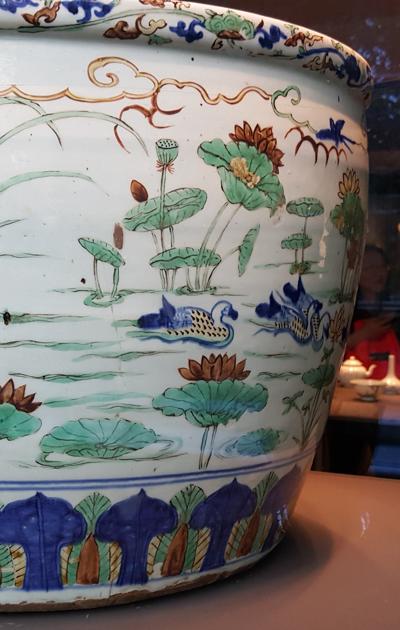
them. Truke puts on a beautiful scarf. All of a sudden we realize, we need to rush for the bus, which is waiting in front of the hotel to bring us to the airport.
The Jingdezhen Airport is crowded. We line up at the check-in desk together; we want to ensure that we sit next to each other in the plane. But first we say farewell – we hug and embrace our fantastic Jingdezhen guide Peter. He was been there all the way for us in Jingdezhen. He speaks phrases in English as an actor in a Shakespeare theater, while gesturing as of part of the Japanese "NO" theater. He will be with his wife and child tonight; but he will start guiding another travel group in Jingdezhen very soon.
The flight to Hangzhou is short. Emily, our new guide, picks us up from Hangzhou Airport Xiaoshan. The bus driver seems too tired for lifting our luggage into the bus. Wai Lan and I try to assist him. Must be a hard job, driving in this traffic. Truke is in front with Ting-tiang; We watch the zillions of cars go by. There are many highways. The air feels much colder here.
Hangzhou grew to prominence as the southern terminus of the Grand Canal and has been one of the most renowned (and prosperous) cities in China for much of the last millennium, also because of its

beautiful natural scenery. The city's West Lake is its best-known attraction.
Hangzhou is the fourth-largest city in China. During the 2010 Chinese census, the metropolitan area held more than 21 million people in an area of 34,585 km2.
Hangzhou became the seat of the Zhou (very roughly) "county" of Hang in AD 589, entitling it to a city wall which was constructed two years later. By a longstanding convention, also seen in e.g. Guangzhou and Fuzhou, the city took the name of the area it administered and became known as Hangzhou. Hangzhou is located at the head of Hangzhou Bay. This bay separates Shanghai and Ningbo. Hangzhou started at the southern end of China's Grand Canal which extends to Beijing. The canal evolved over centuries and reached its full length by 609.
In the Tang dynasty, Bai Juyi was appointed governor of Hangzhou. Already an accomplished and famous poet, his deeds at Hangzhou led to his being praised as a great governor. An example of his leadership is, that he quickly ordered the construction of a stronger and taller dyke when the old dyke had broken and the local farmers were suffering from severe drought.
In 1089, Su Shi (Su Dongpo) was the governor of Hangzhou: he used 200,000 workers to construct a 2.8 km long dam across West Lake (The lake used to be a lagoon, tens of thousands of years ago; silt then blocked the way to the sea and the lake was formed.)
The dam was considered by the Qing emperor Qianlong “particularly attractive in the early morning of the spring time”.
Hangzhou was chosen as the new capital of the Southern Song dynasty in 1132. Most of northern China was conquered by the Jurchens in the Jin–Song wars around that time. The Song court had retreated south of Hangzhou city in 1129 AD, after the original capital in Kaifeng was captured by the Jurchens in the Jingkang Incident of 1127 AD.
Three years before the final collapse of the Song empire (960-1276 AD), the city of Hangzhou was besieged and captured by the Mongol armies of Kublai Khan in 1276. The capital of the new Yuan Dynasty (1276 – 1368 AD) was established in the city of Dadu (Beijing).
Hangzhou remained an important harbor until the middle of the Ming dynasty (1368 -1644 AD) era, until it slowly silted up. During the Qing (1644 – 1912 AD), it was the site of an imperial army garrison.
It is late when we arrive at the Pearl hotel, with its old fashioned looking sandalwood reception desk. The receptionist wants to have our passports overnight to copy information. I decide not to give it as the document is too critical. It causes a bit of a shock wave with the reception desk personnel, but they understand and hand the passports back to our new guide Emily.
I join Truke and Christine in the bar downstairs for a drink. The bar/disco has a type of seventies lights flashing in pink and purple. It reminds me of “Saturday Night Fever” and I expect John Travolta to take the floor soon. Instead, a chanteuse in a flowing pink dress appears and starts singing to the small audience. Her songs create a melancholic atnosphere.
In the hotel room I hear lots of traffic outside; when I open the window, the air is full of SMOG. All these factories and cars in China bother me: the pollution is so bad for the health of the population. Will the Chinese governement ever take measures to better protect the health of its people?
I cannot sleep. By 4:00 I am still awake, so I decide to go find some tea at the reception downstairs. I pass the rooms of the members of our group; what will they be thinking or dreaming of? The receptionist phones someone to provide tea for me. I stroll back through the hall to the elevators; my eye catches a white, linen bag lying in the middle of the hall. A guest must have left there. It is exactly in the center of the view of the receptionist. As I pick it up to check it, he does not blink an eye. The bag feels kind of heavy…it is a box especially for porcelain! It must belong to someone of our group! I look at the receptionist and he looks back when I take it with me to the elevator – am I a thief? – he still does not blink.
Tea is then served in my room, the Oolong smells lovely. Hangzhou is famous for its tea named West Lake Dragon Well Tea in Chinese Longjing. From the Oolong area comes the best tea, it has a strong taste. Checking the bag, I find a tea pot and a book in English. I read in the book for some time and enjoy my tea.
Pictures in this chapter (first to last; per line left to right):
1. View of a chimney from the Manju Hotel room
2. Shopping area near the hotel with porcelain storage area on the right
3. Bookstore near the Manju Hotel (all books in Chinese)
4. Porcelain pigment: pigment blender - camphor oil; overglaze pigment - tai green; overglaze pigment - GuangCui
5. Porcelain ingredients: Ash glaze; Kaolin clay; Saggar clay
6. Blue and white plum vase with peony scroll pattern, Yuan
7. Figurines – period to be validated
8. Bluish White glaze pot with four loops and a cover, Northern Song Dynasty
9. Red glaze covered jar, Xuande reign of Ming Dynasty. Unearthed at Imperial factory site by Ceramic Archaeological Research Institute of Jingdezhen
10. Bluish White glaze
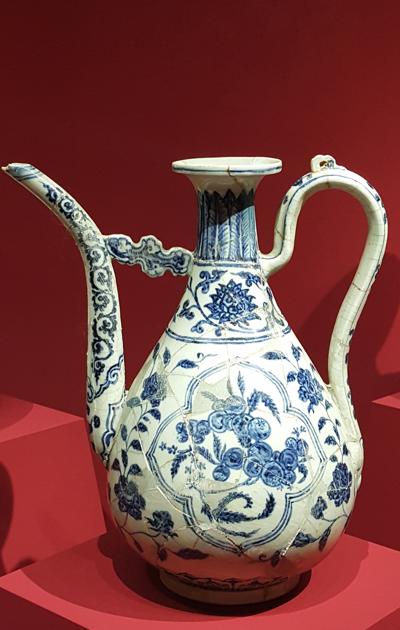
baby-shaped pillow, The Southern Song Dynasty
11. Enamel coloured Kwan-yin with lads, Zhengde reign of Ming Dynasty
12. Egg-white glaze sculpture of Kwan-yin with lads, Yuan
13. Blue and white ink dropper in shape of mandarin duck, Xuande reign of Ming Dynasty, unearthed at Imperial factory site by CAR institute of Jingdezhen
14. Celadon jar with four handles of the Yue Kiln, Eastern Jin Dynasty
15. Bluish white case, Southern Song Dynasty,
16. Celadon covered jar designed with figures and pavilion of Yue kiln, Western Jin Dynasty
17. Blue and white vase with a base and garlic shaped head, Yuan Dynasty
18. Blue and white Ewer designed with double peaches, Yongle reign of Ming Dynasty (collected by CAR institute of Jingdezhen)
19. Blue glaze bowl engraved with dragon pattern, Jiajing period
20. Tea-dust glaze long-neck vase, Qianlong reign of Qing Dynasty
21. Glazed bowl imitating wood, Qianlong reign of Qing Dynasty
22. Bowl with underglaze blue and overglaze red design with dragon, Yongzheng reign of Qing Dynasty
23. Vase, Modern times
24. New colours plate with picture of peasants and farmers, Modern times
25. Coloured porcelain sculptures of dancers, Modern times
26. Porcelain sculpture of flowers and a beauty, Modern times
27. Truke in the Museum Hall
28. Plate with red enamel, Jingdezhen, Collection of Augustus the Strong, Dresden, DE (provided by C. Joerg)
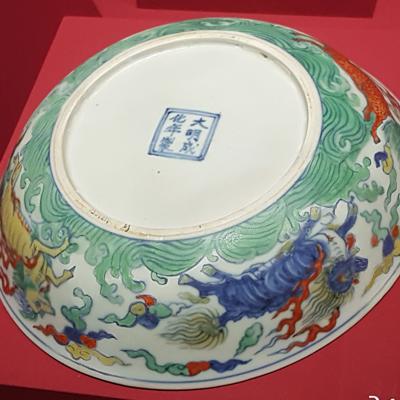
29. Vat for fish and aquatic plants, Longqing reign mark of Ming Dynasty, Jingdezhen, Percival David collection, British Museum, London, UK
30. Truke and the cab driver wait for a bicycle to cross the road
31. Ewer inspired on Middle Eastern forms for huang Jiu (yellow wine), Yongle reign of the Ming Dynasty (Prinsenhof Museum in Delft, NL, 2017 - Exposition of the Porcelain of the Forbidden City)
32. Plate with Chenghua mark, Chenghua reign of the Ming Dynasty (Prinsenhof Museum in Delft, NL, 2017 - Exposition of the Porcelain of the Forbidden City)
33. The Ceramic Archaeological Research Institute, Jingdezhen (Prinsenhof Museum in Delft, NL, 2017 - Exposition of the Porcelain of the Forbidden City).

Get started right away!
What are you waiting for? Capture your adventures in a digital diary that you can share with friends and family. You can switch between any of your devices anytime. Get started in our online web application.
